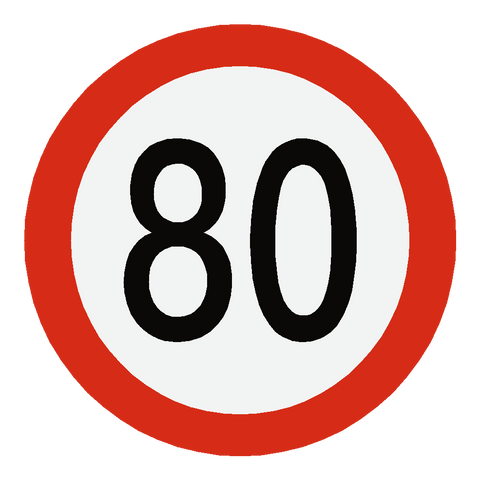Google's R Style Guide
Semillero de R
2016
Google's R Style Guide
We need to ensure that we write in the correct form in R.

All explanations were taken from this link, consult it for more information.
File names
File names should end in .R and, of course, be meaningful.
GOOD: predict_ad_revenue.R
BAD: foo.R
Identifiers
Don't use underscores ( _ ) or hyphens ( - ) in identifiers.
Identifiers should be named according to the following conventions.
The preferred form for variable names is all lower case letters and words separated with dots (variable.name), but variableName is also accepted; function names have initial capital letters and no dots (FunctionName); constants are named like functions but with an initial k.
Examples of identifiers
- variable.name is preferred, variableName is accepted
GOOD: avg.clicks
OK: avgClicks
BAD: avg_Clicks
Examples of identifiers
- FunctionName
GOOD: CalculateAvgClicks
BAD: calculate_avg_clicks , calculateAvgClicks
Make function names verbs.
Exception: When creating a classed object, the function name (constructor) and class should match (e.g., lm).
- kConstantName
Line Length
The maximum line length is 80 characters.

Indentation
When indenting your code, use two spaces.
Never use tabs or mix tabs and spaces.
Exception: When a line break occurs inside parentheses, align the wrapped line with the first character inside the parenthesis.
BAD:
mod <- gamlss(earn ~ years + sex, data = countries)
Spacing
Place spaces around all binary operators (=, +, -, <-, etc.).
Exception: Spaces around ='s are optional when passing parameters in a function call.
Do not place a space before a comma, but always place one after a comma.
Examples of spacing
GOOD:
tab <- table(df[df$days.from < 0, "camp"])
total <- sum(x[, 1])
total <- sum(x[1, ])
Examples of spacing
BAD:
tab <- table(df[df$days.from.opt<0, "camp"])
# Needs spaces around '<'
tab <- table(df[df$days.from.opt < 0,"camp"])
# Needs a space after the comma
tab<- table(df[df$days.from.opt < 0, "camp"])
# Needs a space before <-
tab<-table(df[df$days.from.opt < 0, "camp"])
# Needs spaces around <-
total <- sum(x[,1])
# Needs a space after the comma
total <- sum(x[ ,1])
# Needs a space after the comma, not before
Examples of spacing
Place a space before left parenthesis, except in a function call.
GOOD:
if (debug)
BAD:
if(debug)
Examples of spacing
Extra spacing (i.e., more than one space in a row) is okay if it improves alignment of equals signs or arrows (<-).
plot(x = x.coord,
y = data.mat[, 2],
ylim = ylim,
xlab = "dates",
ylab = age,
main = (paste(age, " eval ", sep = "")))
Examples of spacing
Do not place spaces around code in parentheses or square brackets. Exception: Always place a space after a comma.
GOOD:
if (debug)
x[1, ]
BAD:
if ( debug ) # No spaces around debug
x[1,] # Needs a space after the comma
Curly Braces
An opening curly brace should never go on its own line; a closing curly brace should always go on its own line.
You may omit curly braces when a block consists of a single statement; however, you must consistently either use or not use curly braces for single statement blocks.
GOOD:
if (is.null(ylim)) {
ylim <- c(0, 0.06)
}
if (is.null(ylim))
ylim <- c(0, 0.06)
Curly Braces
Always begin the body of a block on a new line.
BAD:
if (is.null(ylim)) ylim <- c(0, 0.06)
if (is.null(ylim)) {ylim <- c(0, 0.06)}
Surround else with braces
An else statement should always be surrounded on the same line by curly braces.
GOOD:
if (condition) {
one or more lines
} else {
one or more lines
}
Surround else with braces
BAD:
if (condition) {
one or more lines
}
else {
one or more lines
}
BAD:
if (condition)
one line
else
one line
Assignment
Use <-, not =, for assignment.
GOOD:
x <- 5
BAD:
x = 5
Never use <<-, never.
Semicolons
Do not terminate your lines with semicolons or use semicolons to put more than one command on the same line. (Semicolons are not necessary, and are omitted for consistency with other Google style guides.)

General Layout and Ordering
If everyone uses the same general ordering, we'll be able to read and understand each other's scripts faster and more easily.
- Copyright statement comment
- Author comment
- File description comment, including purpose of program, inputs, and outputs
- source() and library() statements
- Function definitions
- Executed statements, if applicable (e.g., print, plot)
Commenting Guidelines
Comment your code. Entire commented lines should begin with # and one space.
Short comments can be placed after code preceded by two spaces, #, and then one space.
# Create histogram of frequency of campaigns by pct budget spent.
hist(df$pct.spent,
breaks = "scott", # method for choosing number of buckets
main = "Histogram: fraction budget spent by campaignid",
xlab = "Fraction of budget spent",
ylab = "Frequency (count of campaignids)")
Attach
The possibilities for creating errors when using attach are numerous. Avoid it.

Remember
- Use common sense and BE CONSISTENT.
- If you are editing code, take a few minutes to look at the code around you and determine its style.
- The point of having style guidelines is to have a common vocabulary.
Remember
“The only way to write good code is to write tons of shitty code first. Feeling shame about bad code stops you from getting to good code”.
Hadley Wickham
Let's go
